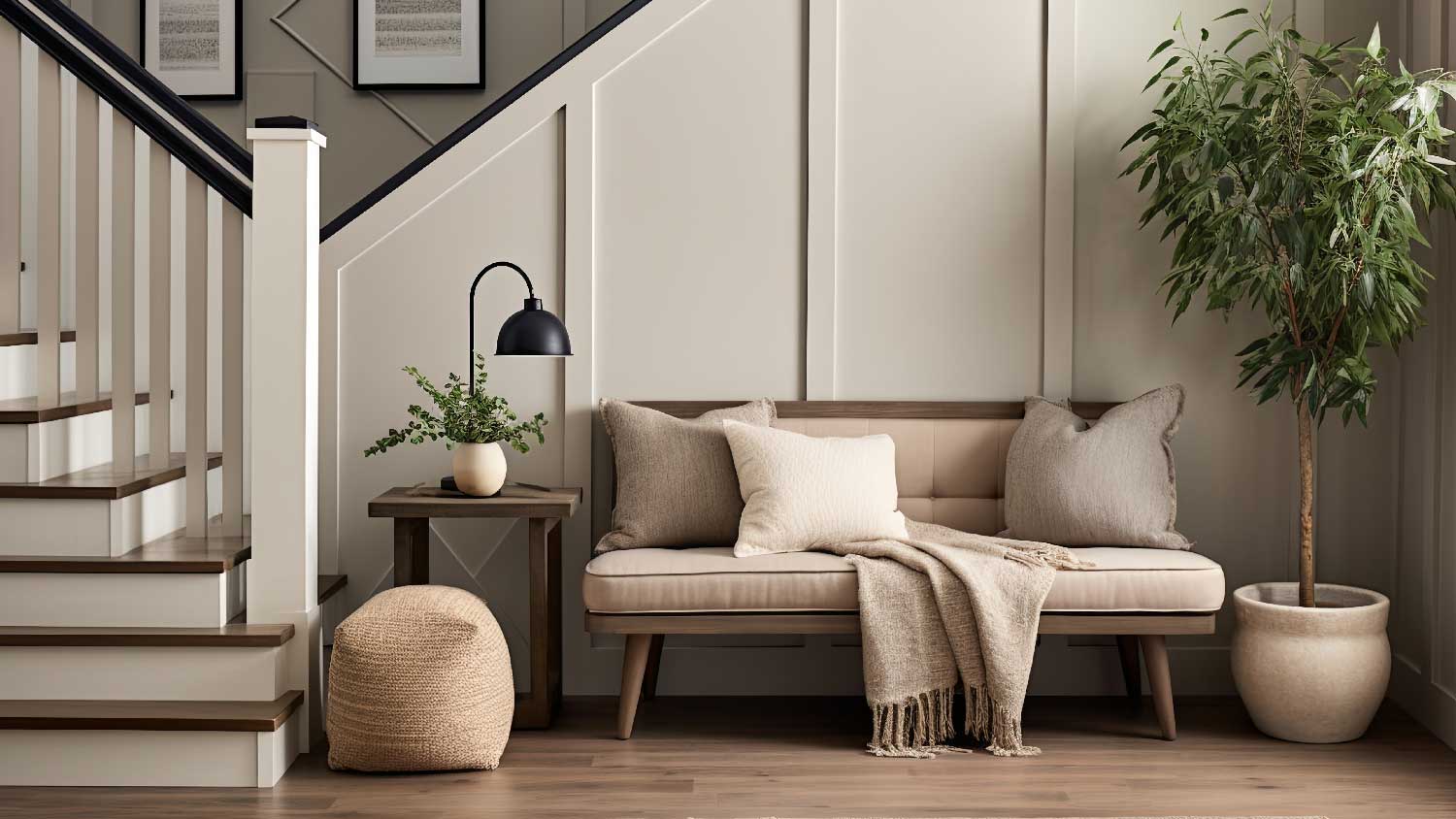
The cost of siding repair varies depending on material, design, and damage. This helpful guide covers the siding repair costs to expect in Columbus, Ohio.
This is not another “the chicken or the egg” thing, there’s actually a right answer here


We recommend installing windows before siding to avoid extra work.
You must remove siding before adding new windows, but not to install replacement windows.
New windows are usually a better investment than new siding, as they insulate the house and reduce energy bills.
Popular siding options include stone, brick, wood, stucco, vinyl, and more.
Get quotes from multiple contractors before adding windows and/or siding.
If you’re planning an upgrade of your home’s exteriors, you’re likely reviewing options to revamp your windows and siding. Before you dive into the project, be sure to determine whether to install new windows or siding first. In most cases, professionals recommend installing windows before siding to avoid extra trim and siding work. Let’s review the pros, cons, and factors to consider when installing windows first.
In almost all cases, it’s better to install your windows before your siding so you won’t have to redo trim and siding work. Here's a full breakdown based on the type of new windows you’re installing.
New construction windows means adding a completely new window (frames, window panes, trim, and more) where there originally wasn’t one. These are usually installed from the exterior of the house. You may have to remove trim or siding to put them in, so always do them before siding if possible. You may also need to put in a new moisture barrier, capping, or repair the framing. The project often includes waterproofing the exterior, which is best left to a professional.
Replacement windows simply means upgrading your existing windows. Because replacement windows are installed from the interior, you could put them in before or after your siding. You won't need to remove siding to install them, but check with your contractor to see if your framing, capping, or moisture barrier needs repair (more on this below). Replacement windows tend to be easier to install and can be a project for moderate DIYers.
Think of your siding as the finishing touch to your project. Leave siding installation for last if possible, so you won't have to rip out and redo any of your work.
As already mentioned, the golden rule is windows before siding. There are several components to a window aside from just the frame and glass to keep in mind during installation.

If you’re installing new windows, you’ll likely need new capping around your windows, which is better to install before your siding. Capping is a protective covering, usually made of aluminum, that surrounds your window frames. It seals the gap between your windows and wall, protecting your home from leaks and water damage.
If you were to tackle siding first, the capping on your old windows could get damaged while removing the siding. You’ll need to recap the existing windows, then cap your new windows when you install them—doubling the expense. Depending on the number of windows, it could cost you several hundred dollars or more to cap and recap them.
Beyond capping, your windows have a moisture barrier that sits behind the siding. If you replace your siding first, you may have to tear off some of the new siding to install your moisture barrier, then reinstall your siding, which could add to the cost.
If you’re hiring the same contractor to do your windows and siding and you choose to do your siding first, ask about free window capping for when they install your new windows.
If you’re adding a window where there originally wasn’t one (in the case of new construction windows), you’ll have to carefully remove your siding to install them. You don’t have to remove siding to replace windows if you use replacement windows and your framing and moisture barrier are in good condition.
If your budget is forcing you to make an either-or decision, windows are almost always the better investment. Not only are new windows aesthetically pleasing, new windows can help insulate your home, save you money on energy bills, and increase the comfort of your home. When you replace your windows, you may also want to reinsulate any gaps between the window and your wall.
While new siding can look nice and offers your home protection, you can always budget for new siding down the road. Local siding contractors can help estimate how much new siding for your home costs.
New windows and siding have the power to do more than boost your curb appeal. They can increase your home’s energy efficiency, which in turn decreases your energy consumption and—more importantly—decreases your energy bill. Siding offers extra layers of insulation to your home, but should you go a step further with insulated siding?
As a homeowner, you have tons of house siding options to make your home look good and protect it from the elements. Keeping factors like budget, climate, and maintenance in mind, you can choose between some of the more popular styles, including:
Vinyl siding
Stucco siding
Wood siding
Fiber cement siding
Metal siding
Stone siding
Brick siding
If you decide to go the insulated route, you’ll have to stick to vinyl siding. Insulated vinyl siding is one of the more expensive types of vinyl siding. It’s an upgrade from the norm where rigid foam insulation is attached to the back of the siding to fill and block air gaps. Not only does this increase energy efficiency, but it can also soundproof your home from outside noise. Insulated vinyl siding has more material than typical vinyl siding, making it heavier and more expensive to ship and install. The cost of materials and installation will give your siding project a higher budget, but insulated vinyl siding is guaranteed to last longer than most other siding options.
Above all, your decision depends on what your house needs the most. If your siding is in bad shape but your windows can hold up a little longer, address the most pressing issue first. If both projects can wait, it can make better financial sense to hold off for both to avoid duplicative work and expenses.
Steps to take for successful window and siding installation:
Ask for contractor referrals from family and friends.
Get quotes from at least three local companies and read reviews.
Ask for the contractor’s advice on the best and most affordable way to tackle your projects.
Check to see if there are guidelines for window and siding installation specific to your municipality.
Look into available tax credits. Some energy-efficient windows qualify for a federal credit.
Window Depot did an amazing job on my deck. I wasnt sure what I wanted to do, but their composite decking was affordable and will last a long time. I am excited to have family over, and I am no longer embarrassed by my backyard. Jeff and the ground crew were polite, respectful, and caring for...
We used Unique Hardwood Floor LLC three years ago to work on the floors of a 70 year old home that needed a great deal of work. Some floors needed repairs, some were replaced and others just needed to be refinished. It was a complicated job as they needed to blend the old and the new to...
We live in a condo and had space to add a tall cabinet. The problem was the space was already occupied by our catsâ litter box. We needed to still keep the litter box in that same corner. Beiler Custom Cabinets was able to work with our need and design request. What was created was an...
Bill Gerhardt sold the company to his employees at the end of 2019, apparently without a workable succession plan and without notifying prospective customers of this fact. Most aspects of the maintenance contract have not been fulfilled: no installation of anual plantings per contract, no...
The company was very easy to work with. My family is now able to enjoy a space that at one point, only collected junk!!!! I feel like i have a whole new addition to the house!!! Wonderful work Blurock on our basement, will recommend!
Roger met me at a moments notice. I was in a bind. He was available and very accommodating. He was right on time, very professional.. the transaction was seamless! Thank you for your help I look forward to working together more in the future.
We had the solar paneling installed over the summer and the folks from Ecohouse they had a very competitive bid. They were able to make recommendations on the siding, whether it would be a good idea to get solar. They did an excellent job with the installation. They also helped us arrange...
Awful. Made an appointment 1 month in advance. Two days before the delivery appointment they called and said they would be there in the morning to pick up my furniture. The appointment was made at 4:30 in the afternoon, and I had written it down to make sure. I told them that the correct...
1st day and 2nd day good.
From average costs to expert advice, get all the answers you need to get your job done.

The cost of siding repair varies depending on material, design, and damage. This helpful guide covers the siding repair costs to expect in Columbus, Ohio.

Fiber cement siding is durable, fire-resistant, and affordable. Learn more about fiber cement installation costs in Columbus, OH.

New vinyl siding adds value and curb appeal to homes in Columbus, Ohio. Learn about average vinyl siding installation costs in Columbus, Ohio.

Tackle your EIFS repair job like a pro by following the steps in our guide, which walks you through cleaning and repairing small holes and cracks.

Wondering how to calculate board and batten spacing? Use this calculator to help. Pay attention to the order in which you complete the calculations.

While Dutch lap is a more detailed type of siding, clapboard is often less expensive and more widely used. If you're weighing these options against each other, our guide can help you decide which type makes the most sense for your home’s facade.